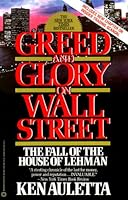The moment you start to ask questions about things happening around you, the more interesting the results you get to see. Having lived in three different countries, I've had the good fortune to understand similar events from several perspectives to develop a viewpoint. One of the things that I find interesting is to understand why certain countries have "developed" while others are still "developing". My interest was however in understanding people and their behavior as it is attributed to those two words.
A developed country should represent people with a developed mindset. Nothing apart from wisdom through knowledge can help a person achieve this status. It is the ability to act and think beyond an animal that makes a human being a developed person. Instilling a sense of fear among others by acts of intimidation or killing may make you powerful, but degrades a human being to levels below that of an ordinary animal. After all, even an animal kills only to satisfy its hunger, not for creating a status symbol. The capability to apply wisdom and restraint in your ability to deal with people around you is what takes you closer to being a developed human being. Sharing that profound capability to control your mind and the monkey that tries to uproot it, among other people creates a developed nation.
However, there is definitely an argument that is to the contrary. "Developed" nations are not messy, unclean and troublesome to live in as compared to other "undeveloped" nations. Hence, there has to be something profoundly great about the people of these nations that the undeveloped people in other countries lack. Even I had that notion in my mind, until I lived and observed for long enough in a developed nation. The answer merely goes back to a basic characteristic of a human being. When people get what they want to lead a life (food and shelter) they become happy. When a group of people become happy due to the ability to have these basic needs satisfied at an individual level, they become peaceful socially. When socially peaceful people live in a nation, they tend to do well to others within their group. When any of these benefits are threatened or uprooted, human beings behave badly. Sometimes, this comes at the cost of denying someone else the same comforts of life.
Today's nations are merely reflections of this trend. The British lived happily when they got what they wanted even if it was at the expense of some other person's lost resources and freedom. Today, when they see that comfort being shaken by other people coming to share it, they have complained. When Americans lost jobs to outsiders, the comfort zone was shaken and they have complained. Ludicrous immigration laws, trade barriers and several other biased human strategies are reflections of that behavior. In all these there has never been the case where people pursued greatness beyond basic human greed to achieve the true status of a developed person or a nation.
Past civilizations in India , China , Egypt , Iraq


